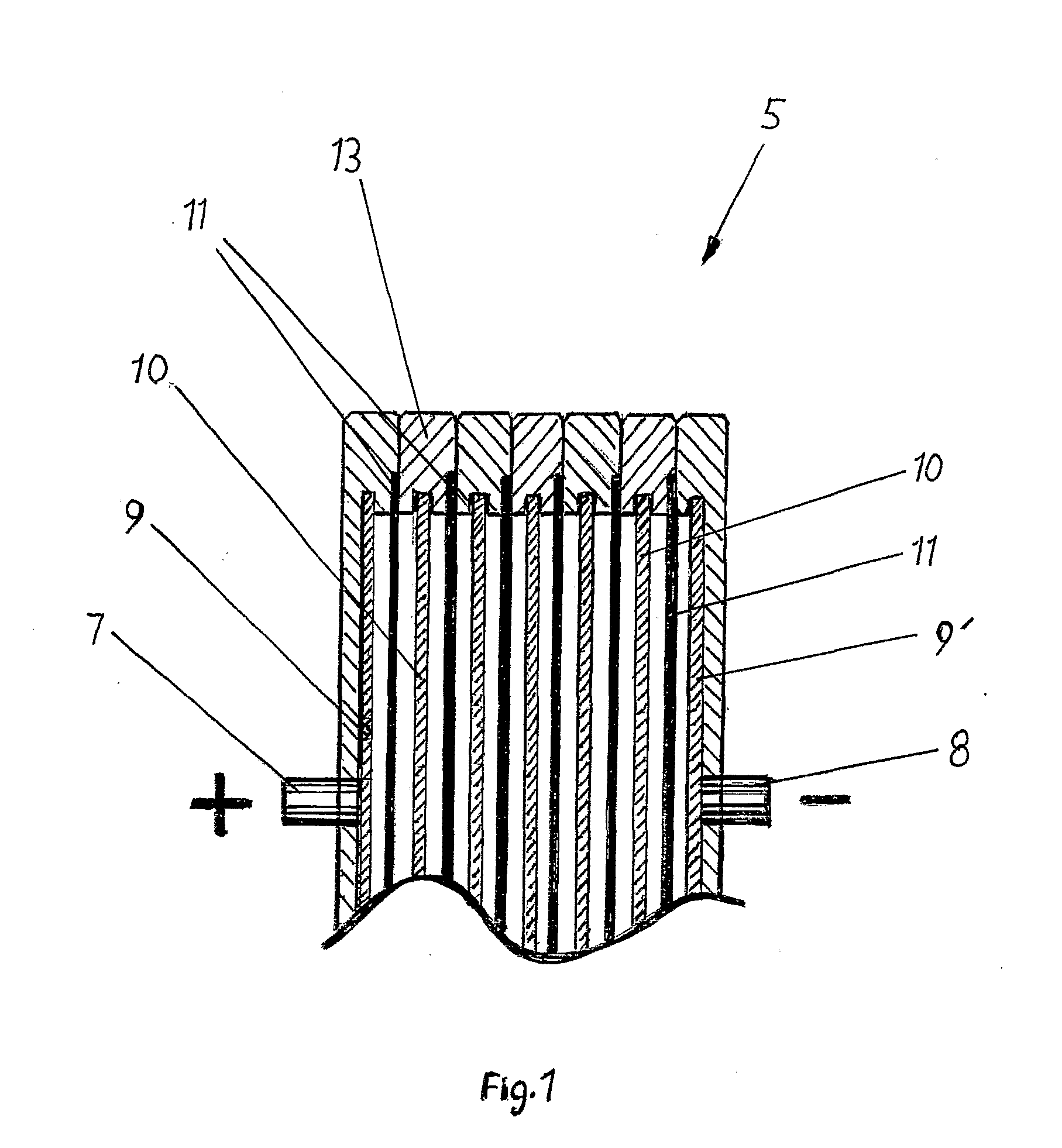Method and Device for Producing a Battery and Battery
a battery and battery technology, applied in the direction of cell components, final product manufacturing, sustainable manufacturing/processing, etc., can solve the problems of insufficient acid density, difficult charging, and increased difficulty in dissolving sulphate,
- Summary
- Abstract
- Description
- Claims
- Application Information
AI Technical Summary
Benefits of technology
Problems solved by technology
Method used
Image
Examples
Embodiment Construction
[0036]Bipolar batteries are suitable to manufacture in the form of piles of a plurality of electrodes, usually with 48 V nominal voltage, but also up to 200 V exists.
[0037]This means that 24 or up to 96 electrodes are connected in series. Batteries manufactured according to the invention can be brought to have such high grade of accuracy that high precision demands can be fulfilled because the electrodes are formed in a controlled manner.
[0038]With reference to FIG. 1 is shown the principle of a bipolar battery which includes a plurality of bipolar electrodes, which are not connected to each other by external connections but are assembled in a pile 5 by piling of first an end electrode 9 having a current collector 7, thereafter a separator 11, a bipolar electrode 10, a separator 11 and so on, and be terminated with a new end electrode 9′ with a current collector 8 but of opposite polarity. Each electrode is constructed with a frame 13 such that its side when they are laid together t...
PUM
| Property | Measurement | Unit |
|---|---|---|
| Fraction | aaaaa | aaaaa |
| Fraction | aaaaa | aaaaa |
| Pressure | aaaaa | aaaaa |
Abstract
Description
Claims
Application Information
 Login to View More
Login to View More - Generate Ideas
- Intellectual Property
- Life Sciences
- Materials
- Tech Scout
- Unparalleled Data Quality
- Higher Quality Content
- 60% Fewer Hallucinations
Browse by: Latest US Patents, China's latest patents, Technical Efficacy Thesaurus, Application Domain, Technology Topic, Popular Technical Reports.
© 2025 PatSnap. All rights reserved.Legal|Privacy policy|Modern Slavery Act Transparency Statement|Sitemap|About US| Contact US: help@patsnap.com



